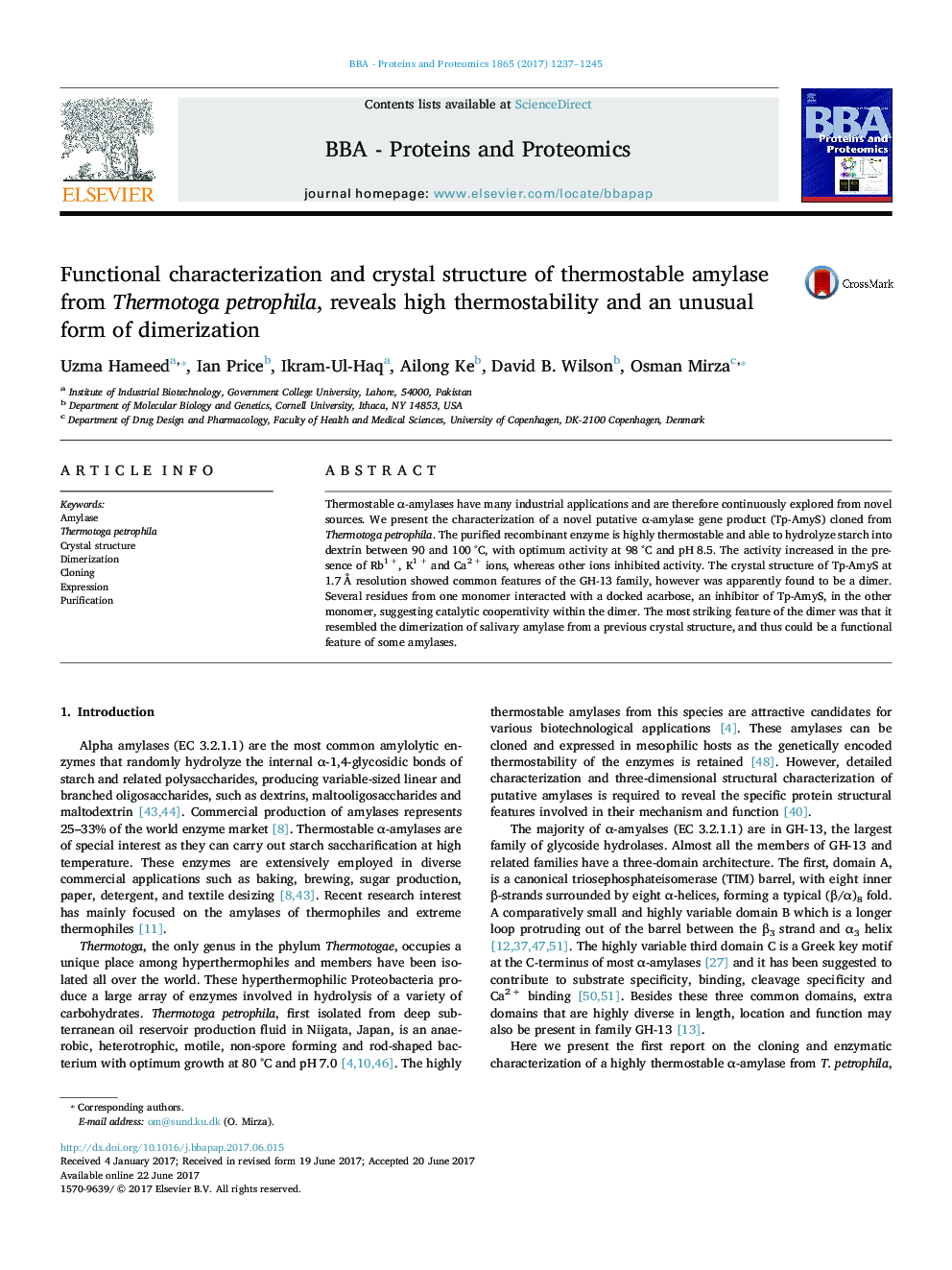| Article ID | Journal | Published Year | Pages | File Type |
|---|---|---|---|---|
| 5131884 | Biochimica et Biophysica Acta (BBA) - Proteins and Proteomics | 2017 | 9 Pages |
â¢Novel thermostable α-amylase cloned from T. petrophila is able to hydrolyze starch into dextrin at 90-100 °C.â¢The crystal structure of Tp-AmyS determined at 1.7 à resolution showed prototypical three domains of GH-13 family.â¢The enzyme is unique as it is a dimer that resemble to salivary amylase.â¢Residues of tunnel, formed by monomer, specify the role of the dimer in substrate binding and hydrolysis.
Thermostable α-amylases have many industrial applications and are therefore continuously explored from novel sources. We present the characterization of a novel putative α-amylase gene product (Tp-AmyS) cloned from Thermotoga petrophila. The purified recombinant enzyme is highly thermostable and able to hydrolyze starch into dextrin between 90 and 100 °C, with optimum activity at 98 °C and pH 8.5. The activity increased in the presence of Rb1 +, K1 + and Ca2 + ions, whereas other ions inhibited activity. The crystal structure of Tp-AmyS at 1.7 à resolution showed common features of the GH-13 family, however was apparently found to be a dimer. Several residues from one monomer interacted with a docked acarbose, an inhibitor of Tp-AmyS, in the other monomer, suggesting catalytic cooperativity within the dimer. The most striking feature of the dimer was that it resembled the dimerization of salivary amylase from a previous crystal structure, and thus could be a functional feature of some amylases.
